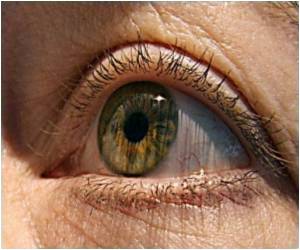Women have a wider pupil diameter than men, reveals study.

Normal, non-pathological emmetropic eyes are the most common type amongst the population (43.2%), with a percentage that swings between 60.6% in children from three to eight years and 29% in those older than 66.
Therefore, a study determines their anatomical pattern so that they serve as a model for comparison with eyes that have refractive defects (myopia, hypermetropia and stigmatism) pathological eyes (such as those that have cataracts).
"We know very little about emmetropic eyes even though they should be used for comparisons with myopic and hypermetropic eyes" Juan Alberto Sanchis-Gimeno, researcher at the University of Valencia and lead author of the study explains to SINC.
The project, published in the journal 'Surgical and Radiologic Anatomy' shows the values by gender for the central corneal thickness, minimum total corneal thickness, white to white distance and pupil diameter in a sample of 379 emmetropic subjects.
"It is the first study that analyses these anatomical indexes in a large sample of healthy emmetropic subjects" Sanchis-Gimeno states. In recent years new technologies have been developed, such as corneal elevation topography, which allows us to increase our understanding of in vivo ocular anatomy.
Advertisement
"It will be necessary to investigate as to whether there are differences in the anatomical indexes studied between emmetropic, myopic and hypermetropic eyes, and between populations of different ethnic origin" the researcher concludes.
Advertisement
Light penetrates through the pupil, crosses the crystalline lens and is projected onto the retina, where the photoreceptor cells turn it into nerve impulses, and it is transferred through the optic nerve to the brain. Rays of light should refract so that they can penetrate the eye and can be focused on the retina. Most of the refraction occurs in the cornea, which has a fixed curvature.
The pupil is a dilatable and contractile opening that regulates the amount of light that reaches the retina. The size of the pupil is controlled by two muscles: the pupillary sphincter, which closes it, and the pupillary dilator, which opens it. Its diameter is between 3 and 4.5 millimetres in the human eye, although in the dark it could reach up to between 5 and 9 millimetres.
Source-Eurekalert









